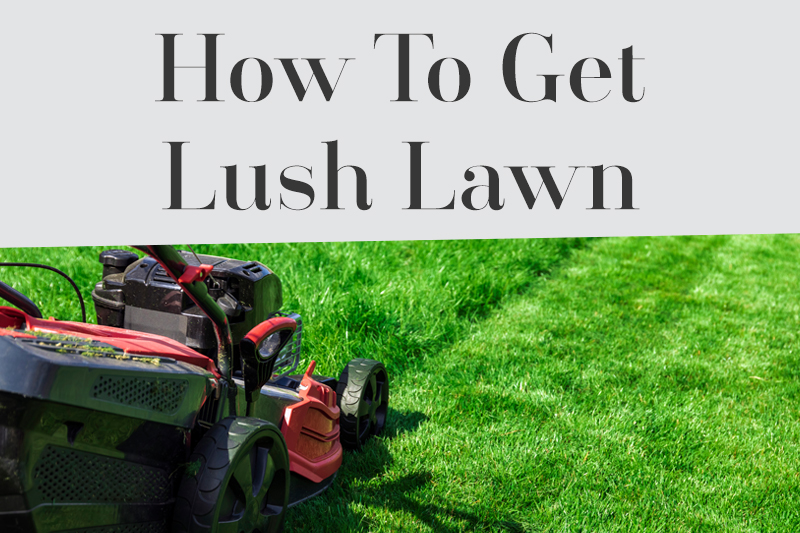Does the prestige and opulence of having a brilliantly green lawn sound like something that you want, but the maintenance and upkeep to achieve this render itself unattainable? Let’s not even mention the plethora of products out there, touting the desired end product, with varying levels of practicality and price brackets that leave something to be desired.
Well, like most things in life, this is not something that you can apply a quick fix to and see results overnight. After all, even withal its historic might, Rome wasn’t built in a day. Your lawn is ties your whole outdoor environment together, like a new suit, it is the first impression and the focal point of everybody’s pride and joy, their home.
For a suit to be noteworthy, the fabric is paramount. Everything from the colour to the composition has to be spot on in order for the suit to achieve the desired effect. Likewise, the backbone of your lawn, the soil, needs the customised approach to deliver what it is lacking in order for everything to thrive in it.


Prevention Beats Cure
It frustrate me that people want answers, without knowing what the problem is to begin with?
I am a firm believer that prevention beats cure. Proactively implementing strategies like seasonal program and planning to ensure minimal inventory is the best way to go.
Soil Chemistry management: A simple soil test that delivers detailed recommendation on keeping your soil at optimum performance
Irrigation Suitability: Greatest influence in soil chemistry, roots and health
Disease analysis: Prevention beats cure Products to prevent outbreak before it happens.
Nutrition and program: Nutrition Programs to your specific requirements and budget constraints.
Application: Whether it is granular or tank to increase turf quality.

Lawn Treatments – Pest, Weeds and Diseases.
Insects, weeds and diseases and Your Lawn Go Hand-in-hand.
Many can be harmful to humans, deadly to pets and wildlife. So please, read the directions carefully BEFORE applying any chemical to your lawn or landscape.
A professional lawn care provider should be able to treat your lawn for most common lawn pests, safe and effectively. Ask them about their pest control applications. Using a pro for this makes a lot of sense. You don’t have to buy or store those nasty chemicals, but you don’t even have to try and read all those label warnings and cautions in printing so small that you need a magnifying glass to read. Not only do the professionals know which chemicals take care of which bugs, weeds and diseases but they also know what those labels are saying.
Thick turf helps prevent weeds by giving them less room for a foothold. Mowing the correct height also helps as grass blades shade the soil from the warmth of the sun and prevent the seeds from germinating. The control of weeds is an ongoing process. It may take several applications to eradicate some existing weeds.
Lawn Care Practices
Regular and correct mowing is a very important Lawn Care maintenance operation.
Mowing higher will result in taller grass with will shade the soil and will reduce water loss from evaporation.
When the grass is cut too low, most of the food producing parts of the plant (the leaves) are lost. This can result in a brownish lawn that can take weeks to recover.
The second rule is frequency of mowing. Lawns grow at different rates from season to season and year to year. During the spring and autumn, turf produces more top growth. Your mowing schedule should match the growth of your lawn. Once a week may not be enough during periods of heavy growth, but every ten days might be fine during the summer.

Lawn Fertilisation
All living things need nutrition, or food. With grass plants nutrients are absorbed by the roots from the soil. Fertilisation provides, or supplements, the natural nutrients so the plant will be as healthy and attractive as possible. The main nutrients are Nitrogen (N), Phosphorous (P) and Potassium (K) together with certain elements that grass plants require to be healthy and strong.
What is Best Management Practice?? Best management practices for fertilization incorporate efficiency, premium quality and environmentally responsible products to not only maximise your fertilizer budget, improve also to improve your turf quality.
There are 3 Categories in fertilising, Slow release, water soluble (tank mix), liquid fertilising (for immediate response)
Aeration
- Like every living thing, grass needs air and water to grow and thrive. Simple lawn maintenance can make all the difference.
- During the summer months in particular, lawns suffer from continual use – be that children, sports, or BBQs – these all combine to cause surface compaction. Lawn maintenance is crucial to prevent damage.
- This compaction impedes drainage and it is harder for air, water and fertiliser to penetrate into the roots.
- As such, lawn aeration during the Spring and Autumn, helps allow the soil temperature to rise more quickly and the surface to literally ‘breathe’.
- Good lawn maintenance requires very simple aeration by driving a fork into the lawn at regular intervals. For a small lawn this can be done simply by hand, or there are many implements for sale in garden centres that can do the job for you on larger areas.

For More information contact:
Alex Mavrodis
Lush Landshaping
M:0410 632 439


